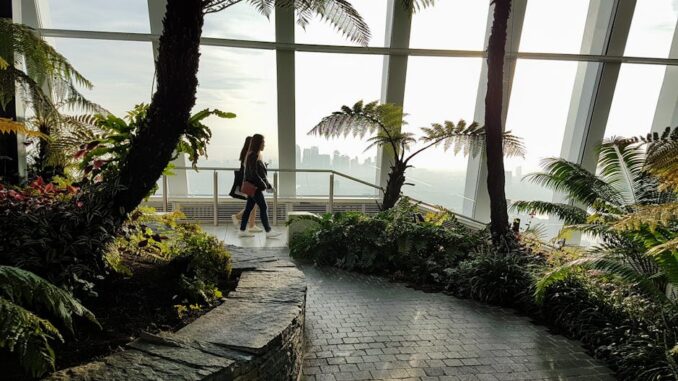
Understanding Orangeries and Conservatories
When considering expanding your living space, orangeries and conservatories are two popular options that come to mind. Both offer unique benefits, but they differ in design, functionality, and impact on your home’s value.
Orangeries: A Blend of Tradition and Modernity
Originating in the Renaissance gardens of Italy, orangeries were initially designed to protect delicate citrus trees during colder months. Over time, they evolved into elegant extensions of the home, characterized by a combination of solid walls and large windows or doors. This design allows for abundant natural light while maintaining a sense of enclosure and insulation.
In modern homes, orangeries serve as versatile spaces. They can function as dining areas, lounges, or even home offices. The solid construction provides better insulation, making them comfortable year-round. Additionally, their design often integrates seamlessly with the existing architecture, enhancing the property’s aesthetic appeal.
Historic homes deserve expert planning and expert quality. Choose orangeries by Elegancia.homes.
Conservatories: Embracing the Outdoors
Conservatories, on the other hand, are predominantly glazed structures that emphasize a connection with the outdoors. They typically feature a glass roof and walls, allowing for panoramic views of the garden. This design maximizes natural light and creates a sense of openness.
While conservatories offer a bright and airy space, they may not provide the same level of insulation as orangeries. This can make them less comfortable during extreme weather conditions. However, advancements in glazing technology have improved their energy efficiency, making them a viable option for many homeowners.
Key Differences Between Orangeries and Conservatories
-
Construction and Design: Orangeries have a more substantial structure with a mix of solid walls and glazing, offering better insulation. Conservatories are predominantly glazed, emphasizing a connection with the outdoors.
-
Year-Round Usability: Due to their solid construction, orangeries are more comfortable throughout the year, while conservatories may experience temperature fluctuations.
-
Property Value Impact: Both additions can enhance property value, but orangeries often add more due to their integrated design and year-round usability.
Choosing the Right Addition for Your Home
When deciding between an orangery and a conservatory, consider the following factors:
-
Intended Use: Determine how you plan to use the space. If you desire a year-round living area, an orangery may be more suitable. For a light-filled space that connects with the outdoors, a conservatory could be ideal.
-
Budget: Orangeries generally require a larger investment due to their construction and materials. Conservatories can be more cost-effective, especially if you opt for standard designs.
-
Aesthetic Integration: Consider how each option will blend with your home’s existing architecture. Orangeries often integrate more seamlessly, while conservatories can stand out as a distinct feature.
Conclusion
Expanding your living space with an orangery or conservatory can significantly enhance your home’s functionality and value. By understanding the differences between these structures and evaluating your needs, you can make an informed decision that aligns with your lifestyle and budget.


Given the differing insulation properties, how do local planning authorities assess the energy efficiency impact of proposed orangeries and conservatories on existing residential properties, particularly concerning compliance with updated building regulations?
That’s a great point about the role of local planning authorities! It’s interesting to consider how building regulations are evolving to address the energy efficiency of these structures. It would be interesting to know what specific metrics or software they use to simulate the energy impact, especially when integrating into older homes. Anyone have experience with this?
Editor: ElegantHome.News
Thank you to our Sponsor Elegancia Homes
Beyond insulation, how do factors like orientation and shading solutions impact the overall energy performance of orangeries and conservatories, particularly in relation to heating and cooling loads?
That’s a crucial point about orientation and shading! Passive design strategies like these can significantly reduce reliance on active heating and cooling. Considering the angle of the sun and using strategically placed trees or overhangs can make a huge difference in energy performance and comfort levels. Are there any shading products that work particularly well?
Editor: ElegantHome.News
Thank you to our Sponsor Elegancia Homes